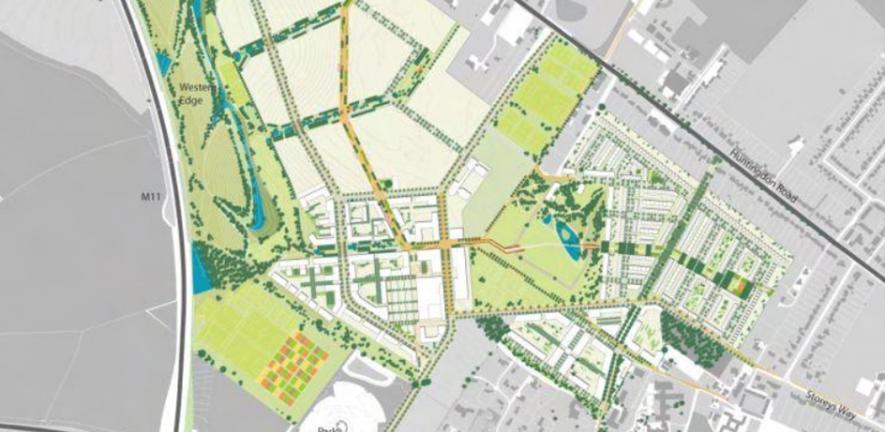
The University of Cambridge has been granted planning permission for its £1 billion development in North West Cambridge.
The University of Cambridge has been granted planning permission for its £1 billion development in North West Cambridge.
This development is a major part of the University’s long term future.
Vice-Chancellor Professor Sir Leszek Borysiewicz
Local planning authorities have approved outline planning permission for the 150 hectare site which will include 1,500 homes for key University and College employees, 1,500 homes for sale, accommodation for 2,000 students, 100,000 square metres of research facilities, including up to 40,000 square metres for research institutes and private research facilities linked to the University and a wide range of community facilities. Around one third of the site will be used as public open space for sports, informal recreation and ecological use.
“This development is a major part of the University’s long term future,” said Vice-Chancellor Professor Sir Leszek Borysiewicz. “It will provide much of the residential and research accommodation that the University needs as it grows over the next 20 years.”
“Attracting world class academics, researchers and research partners is vital for the University to retain its world class position amid growing global competition” he said. “Being able to provide high quality, affordable housing in a thriving community will be an important element of our offer to them.”
The homes will be built to high standards of design and sustainability. Houses and flats will be built to Sustainable Homes Level 5, equivalent to zero carbon. Non-residential buildings will be built to BREEAM Level Excellent, the equivalent sustainability level for other buildings. This will therefore be one of the most sustainable developments of this scale in the UK.
The University has been formulating the proposals since 2003 and has undertaken a full programme to engage local communities in the process. “It is very important that our development is integrated into the existing community and brings positive benefits to local people” said Project Director Roger Taylor. “The new community facilities will be open to all and everyone will have access to large areas of new open space for sports, walking and other activities”. The development’s main area of open space will be almost as large as Parker’s Piece in Cambridge.
Central to the University’s proposal is its Transport Plan which will minimise car use. “Local roads already get congested at commuter hours,” said Roger Taylor. “But many of our residents will work on site or in nearby University facilities. We will invest in dedicated cycle routes and facilities and give priority to cyclists and pedestrians. This, along with our support for improved public transport services, will minimise car use at these times. We have agreed with the highways authority a programme of improvements in the local road network to mitigate any adverse impact arising from the development.”
The University has also developed a water management system for the entire site. This will ensure that the development does not add to flood risk and will actually improve the flood situation downstream in Girton.
Phase one of the development will be subject to approval from the University’s Regent House, which will be sought in early 2013. This will comprise around 530 homes for University staff, some 426 homes for sale, accommodation for 300 students and the local centre. Roger Taylor said “it is really important for the success of this development that we create a strong and healthy community right from the start. That’s why we are building the local centre and community facilities in the first stage, not at the end.”
These will include a community centre, primary school, nursery, GP surgery, senior care home, supermarket and shops, hotel and police office along with much of the public open space. The community facilities will welcome people from the surrounding neighbourhoods.
The University is currently seeking residential and commercial development partners for the different elements of phase one.
The University recently announced the results of an architectural competition to select practices for the design of the eight lots that make up much of phase one. The competition attracted entries from 158 national and international practices.
It is hoped that phase one will start in early 2013 and be completed by mid-2015.
Professor Borysiewicz added: “We are determined to create a community that benefits the whole of Cambridge and secures the University’s long term future.”
This work is licensed under a Creative Commons Licence. If you use this content on your site please link back to this page.

